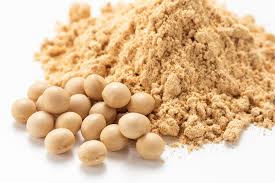In the world of modern agriculture and feed manufacturing, soy has emerged as one of the most versatile and valuable crops. Its high protein content, digestibility, and adaptability make it a preferred ingredient for livestock, poultry, and aquaculture feeds. As global demand for sustainable and efficient protein sources continues to rise, new processing methods have been developed to enhance soy’s nutritional value. One such innovation that has gained widespread attention is mechanical extruded soy, a product of advanced extrusion technology that transforms raw soybeans into a high-quality, digestible, and nutrient-rich feed ingredient.
Understanding
Mechanical extruded soy is produced through a process known as mechanical extrusion, which involves subjecting soybeans to high heat, pressure, and friction for a short duration. This process not only improves the nutritional profile of soybeans but also eliminates anti-nutritional factors that can hinder animal performance. The extrusion process typically begins with cleaned and dehulled soybeans, which are fed into an extruder. Inside the extruder, the soybeans are rapidly heated through mechanical shear and compression, reaching temperatures that deactivate harmful compounds such as trypsin inhibitors and urease.
The entire process usually takes less than a minute, after which the extruded product is expelled through a die, where it expands and cools rapidly. This expansion results in a porous, flaky texture that improves digestibility and mixing in feed formulations. Unlike solvent extraction, mechanical extrusion retains most of the soybean oil within the meal, providing additional energy value to animal diets. This characteristic makes it an excellent option for feed manufacturers seeking a balance of protein and energy in their formulations.
Nutritional Advantages of Extruded Soy
Extrusion enhances both the physical and chemical properties of soybeans, making them more beneficial for livestock and poultry nutrition. The process improves protein digestibility by denaturing complex proteins into simpler forms that are easier for animals to absorb. It also reduces or eliminates anti-nutritional factors like lectins, saponins, and trypsin inhibitors, which can otherwise reduce feed efficiency and growth rates.
Another key benefit of mechanical extrusion is the preservation of amino acids. Lysine, methionine, and threonine essential amino acids for growth and tissue development remain intact when extrusion conditions are optimized. Furthermore, since the process is mechanical and does not rely on chemical solvents, the final product is free from residual chemicals, making it safer and more natural for animal consumption.
Additionally, the retained oil content in extruded soy adds to the feed’s energy density. This is particularly beneficial in poultry and swine diets, where high-energy feeds contribute to better growth performance and feed conversion efficiency. The resulting meal also has improved palatability and mixing characteristics, ensuring uniform distribution of nutrients in feed rations.
Applications in Animal Nutrition
Extruded soy plays a vital role in various segments of animal nutrition. In poultry production, it is widely used in broiler and layer diets due to its high digestible protein and energy content. The elimination of anti-nutritional factors ensures better nutrient absorption, leading to improved weight gain and egg production.
In swine feeding programs, extruded soy serves as a key protein source that supports muscle development and enhances feed efficiency. Its balanced amino acid profile closely matches the nutritional needs of pigs, making it a preferred choice for piglet and grower-finisher diets.
In ruminant feeding, particularly dairy and beef cattle, extruded soy contributes valuable bypass protein, which supports milk production and muscle growth. Its oil content also provides a slow-release energy source, promoting better metabolic health in high-producing cows.
Aquaculture operations have also begun to incorporate extruded soy into fish and shrimp diets. The improved digestibility and nutrient availability make it an effective alternative to fishmeal, supporting sustainable aquafeed formulations while reducing dependence on marine protein sources.
Benefits for Feed Manufacturers and Farmers
Feed manufacturers and livestock farmers alike benefit from the use of extruded soy. From a manufacturing perspective, the product’s consistency and ease of handling simplify feed formulation. Its uniform particle size and reduced dust improve blending efficiency and pellet quality in compound feed production.
For farmers, the benefits are seen directly in animal performance and overall productivity. Livestock fed with extruded soy typically show higher growth rates, better feed conversion ratios, and improved health outcomes. The higher fat content in extruded soy provides additional energy that supports optimal growth even in intensive production systems.
Moreover, because mechanical extrusion requires no chemical solvents, the process is considered environmentally friendly. Farmers and feed producers who prioritize sustainable production practices can confidently use extruded soy as part of eco-friendly feeding programs.
The Technology Behind Mechanical Extrusion
The mechanical extrusion process depends on specialized equipment known as an extruder, which uses a combination of mechanical force, heat, and pressure to cook and expand soybeans. The key components include a screw shaft, barrel, and die, all designed to create controlled shear and compression.
Temperature and moisture control are critical to achieving the desired product quality. The process typically operates between 120°C and 160°C, depending on the type of soybeans and the targeted nutritional output. Too little heat may leave anti-nutritional factors active, while excessive heat can damage essential amino acids.
Modern extruders come equipped with automatic control systems that monitor temperature, pressure, and feed rate to ensure consistent results. This precision allows producers to fine-tune the extrusion process for different animal species and feed applications.
Sustainability and Environmental Impact
Sustainability has become a top priority in the feed and agricultural industries. Mechanical extrusion aligns well with this goal, as it eliminates the need for chemical solvents and reduces waste. The process consumes less energy than traditional oil extraction methods and produces minimal environmental emissions.
Additionally, because the oil is retained within the meal, there is no need for separate oil recovery or refining processes. This not only saves resources but also reduces the carbon footprint associated with transportation and processing. By utilizing locally grown soybeans, producers can further enhance sustainability by minimizing the distance between production and consumption.
Market Trends and Future Outlook
The demand for extruded soy is expected to rise as feed industries continue to prioritize efficiency, nutrition, and sustainability. With the growing population and rising meat consumption, feed manufacturers are seeking innovative ways to produce high-quality feeds that support rapid and healthy animal growth.
In developing regions, the adoption of extrusion technology is expanding as local feed mills recognize its economic and nutritional benefits. Furthermore, as consumers increasingly demand traceable and sustainable food sources, the appeal of mechanically processed feed ingredients continues to grow.
Technological advancements in extrusion equipment will also drive future growth. New generation extruders with energy-efficient designs, improved heat transfer, and automated control systems will make production more cost-effective and scalable for both small and large feed manufacturers.
Conclusion
Mechanical extruded soy represents a significant advancement in the field of animal nutrition and feed processing. By combining superior nutritional value, improved digestibility, and sustainable production methods, it provides an ideal solution for the challenges faced by modern agriculture. Its versatility across livestock, poultry, and aquaculture sectors underscores its importance as a reliable, high-quality protein source. As the global feed industry continues to evolve toward greater efficiency and sustainability, mechanical extrusion technology will play a pivotal role in shaping the future of animal nutrition, ensuring that both producers and consumers benefit from healthier, more sustainable food systems.















